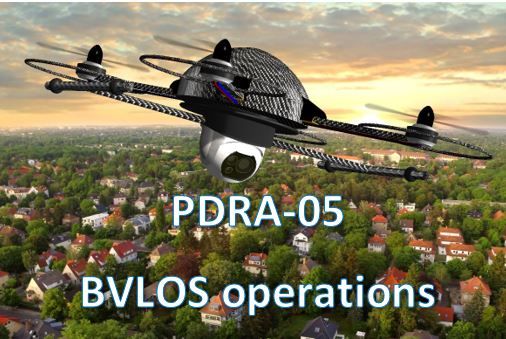The Joint Authorities for Rulemaking on Unmanned Systems (JARUS) has published a predefined risk assessment (PDRA) for BVLOS operations in uncontrolled airspace, with a low probability of encounter with manned aircraft. The document was developed with the support of the Euroepan Aviation Safety Agency (EASA) and EU aviation authorities. The PDRA provides a methodology to assess an airspace and determine if at least 50% of manned aircraft are detectable by the Uncrewed Aerial Systems (UAS) operator.
PDRA-05 is the result of applying the SORA to UAS operations performed in the ‘specific’ category The PDRA is due to be introduced in the EU regulatory framework at the next occasion. In the meantime UAS operators can use its content as reference in their applications.
The PDRA was developed considering the increasing demand for UAS operations in Beyond Visual Line of Sight (BVLOS), in nonsegregated airspace, without using airspace observers, with greater range and larger UAs compared to the operations currently covered by national regulations, and before U-space/UTM services supporting air traffic separation become widely available. The PDRA is based upon SORA version 2.0 and any future changes to this version of SORA may lead to changes of the provision in this PDRA.
Therefore, this PDRA is intended to provide a means to facilitate the operational authorisation of such operations while still considering limitations that ensure a low intrinsic risk of the operations, including those identified in previous PDRAs for BVLOS operations:
- UA with maximum characteristic dimensions up to 3 m and typical kinetic energy up to 34 kJ;
- UA operated over sparsely populated areas;
- UA operated at a maximum height of flight geography of 110m;
- BVLOS within the range of a direct C2 Link, which limits the area covered and also constitutes a conservative limitation considering the limited experience with communication networks (e.g. mobile networks);
- In uncontrolled airspace with a low probability of encounter with manned aircraft and in which at least 50% of manned aircraft are detectable by the UAS operator.
The document can be viewed here
For more information visit:




